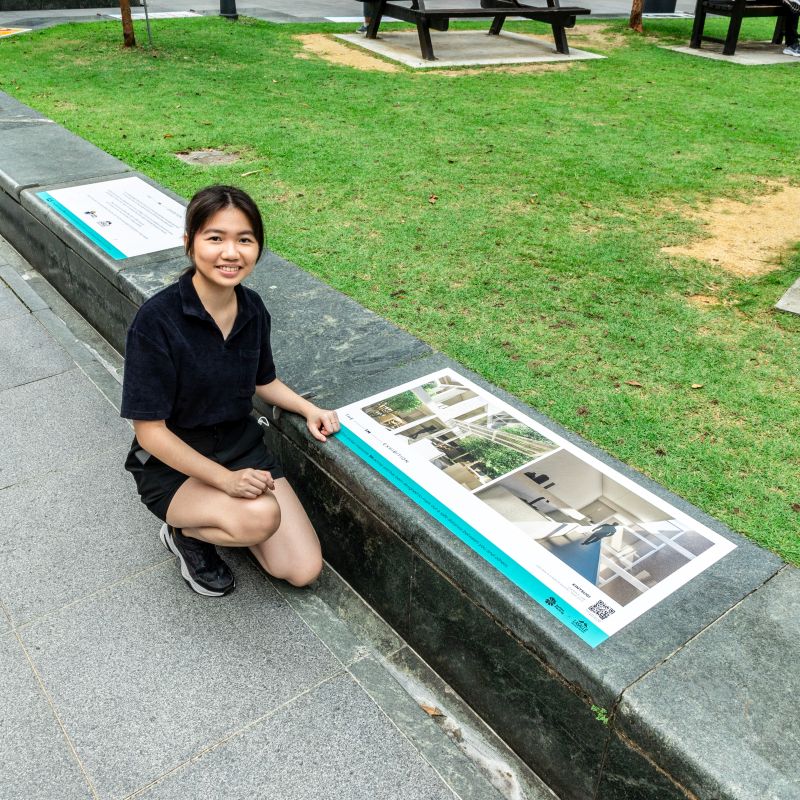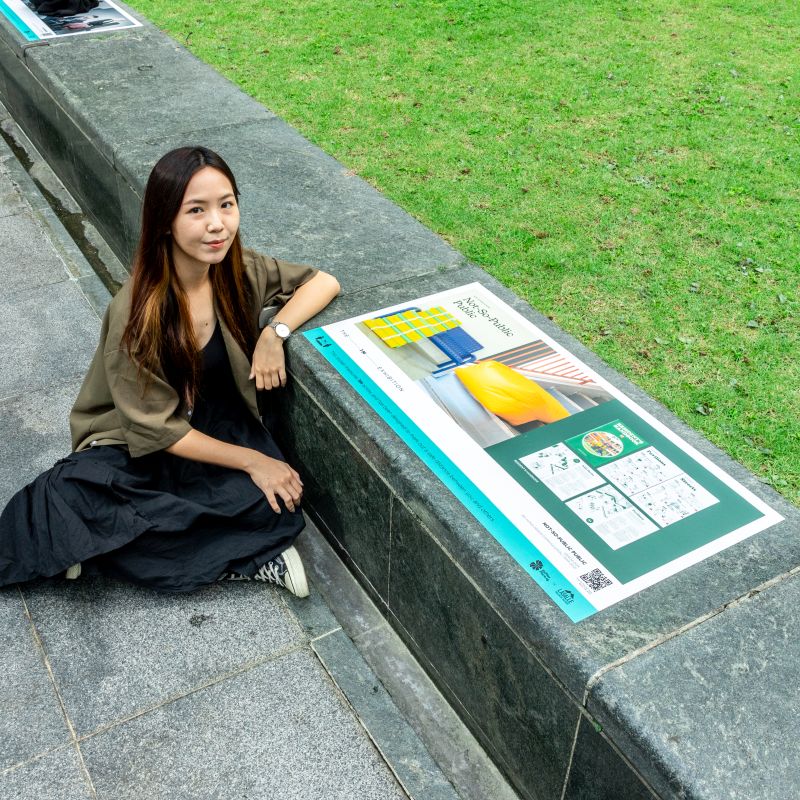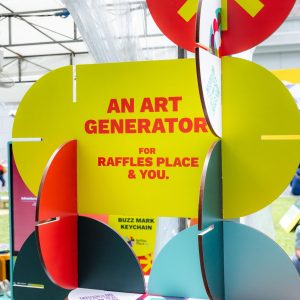
Raffles Place Alliance has collaborated with LASALLE College of the Arts and Publicis Singapore to transform the ubiquitous safe distancing sticker into a unique art exhibition held in Raffles Place.
In a first-of-its-kind exhibition called ‘The 1M Exhibition’, a total of 177 artworks by 105 graduates and students from LASALLE’s Faculty of Design will be exhibited around Raffles Place Park using the unexpected medium of social distancing stickers, making safe distancing less mundane and a lot more purposeful to the visitors of the park.
“We are delighted to have the next generation of Singaporean artists, makers and creators transforming the spaces in Raffles Place Park. We hope the collaboration will amply showcase their energy and creativity to the working community in the CBD.” says Mr Chew Peet Mun, Chairman of Raffles Place Alliance.
Each artwork showcased in ‘The 1M Exhibition’ measures exactly 1 metre across – the distance encouraged for staying safe in public spaces. The exhibition masters the art of safe distancing by transforming empty spaces on benches, into places for art and discovery.
“The pandemic has brought many challenges, but it has also given us the opportunity to try something new. We loved the idea of taking our students’ works to an unexpected location. This collaboration with Raffles Place Alliance comes at a perfect time as people return to in-person experiences, and it gives our graduates and students greater exposure and a more tangible connection with audiences,” says Ms Nur Hidayah, Dean, Faculty of Design at LASALLE.
Running for three months from 5 April 2022, the exhibition showcases the works of LASALLE graduates and students from the School of Design Communication, School of Fashion and School of Spatial & Product Design.
The exhibition was an initiative conceived to bridge the gap between potential employers and the next generation of artists. We spoke to four artists to find out about their pieces and how they felt about their work being shared with the Raffles Place community.

Clearice Law with ‘Kintsugi’
Although grateful, Clearice Law also felt afraid to display her work, but found comfort in the thought that others could potentially resonate with her piece.
Clearice named her piece ‘Kintsugi’ after the form of art derived from wabi sabi, the Japanese philosophy where beauty is found in every aspect of imperfection in nature, a perspective that Clearice credits to influencing the way she designs spaces.
Nicholas Bee was pleasantly surprised when he found that his work was selected for the 1M Exhibition.

Nicholas Bee with ‘ròu’
Nicholas based his work, ròu (the Chinese character for meat) on his love of food. But with animal agriculture contributing to global warming and biodiversity loss, there has been a rising trend to explore alternative meat sources, such as lab-grown meat.
Nicholas added, “I wanted this artwork to showcase what the future of cultivating meat could be like, as well as how it can affect our relationship with food.”
While some students created artistic work based on their love and philosophy, others were inspired by observing the everyday ongoings in the world.

Gracia Goh with ‘Not-So-Public Public’
Take Gracia Goh for instance. Wondering why people in Singapore jaywalk as often as they do, she created ‘Not-So-Public Public’, which represents a visual inquiry that questions the current state of public spaces in public housing developments.
When asked about how she felt about the exhibition, Gracia shared how important it was to her that art is made accessible and free for everyone so that we can humanise the built environment.

Nicolette Ow with ‘In Plain Sight’
Nicolette Ow created ‘In Plain Sight’ to shine light on low-wage workers who often fade into the background. She considers this piece as an invitation to see them in a different light, through the lens of fashion.
Nicolette sees the exhibition as a platform to bring these workers’ stories to the masses and hopes her photographs will spark more conversations about how we view these individuals and the communities they represent.
To learn more about the students behind each work, visitors to the exhibition can scan the QR code located on each artwork.




